Table of Contents
Introduction
Historical Tours in Zimbabwe, a land steeped in history and cultural richness, invites travelers to embark on a journey through its storied past. Nestled in southern Africa, this nation boasts a tapestry of historical sites that chronicle the rise and fall of ancient civilizations, the struggles and triumphs of colonial eras, and the resilience of its people. From the iconic ruins of Great Zimbabwe to the natural wonder of Victoria Falls, each historical tour offers a gateway into Zimbabwe’s diverse heritage. These expeditions not only unveil ancient mysteries and architectural marvels but also provide insights into the traditions, legends, and contributions that have shaped Zimbabwe into the vibrant nation it is today. Join us as we explore the historical treasures that make Zimbabwe a captivating destination for history enthusiasts and adventurers alike
Brief Overview of Historical Tours in Zimbabwe
Zimbabwe’s history is a tapestry woven with threads of ancient civilizations, colonial influences, and the struggle for independence. At the heart of this heritage lies the Great Zimbabwe National Monument, a testament to the once-thriving Kingdom of Zimbabwe and a UNESCO World Heritage site renowned for its impressive stone ruins. These ancient structures, built without mortar, showcase the architectural prowess and organizational skills of early African societies.
The country’s cultural heritage is equally rich, with traditions and customs passed down through generations. Artistic expression thrives in Zimbabwe, seen in vibrant music and dance rituals like the mbira and traditional Shona sculpture. Colonial history, evident in the architecture of cities like Harare and Bulawayo, reflects Zimbabwe’s complex journey from British rule to independence in 1980.
Importance of Historical Tours in Understanding Zimbabwe’s Past
Historical tours in Zimbabwe play a crucial role in unraveling the layers of its past. They offer a firsthand encounter with archaeological sites such as the Matobo Hills, adorned with ancient rock art that narrates stories of early hunter-gatherer societies. Exploring these sites provides insight into Zimbabwe’s pre-colonial history, offering a deeper understanding of its indigenous cultures and their connections to the land.
Colonial-era landmarks, like Cecil Rhodes’ grave in the Matobo Hills, serve as poignant reminders of Zimbabwe’s struggle against foreign domination. By visiting places like Victoria Falls, famously traversed by explorer David Livingstone, visitors gain an appreciation for the cultural significance of natural wonders and the impact of European exploration on local communities.
Furthermore, historical tours foster cultural exchange and education, promoting appreciation for Zimbabwe’s diverse heritage among both locals and international visitors. They contribute to heritage preservation efforts, ensuring that future generations can continue to learn from and celebrate Zimbabwe’s rich historical and cultural tapestry
Great Zimbabwe National Monument
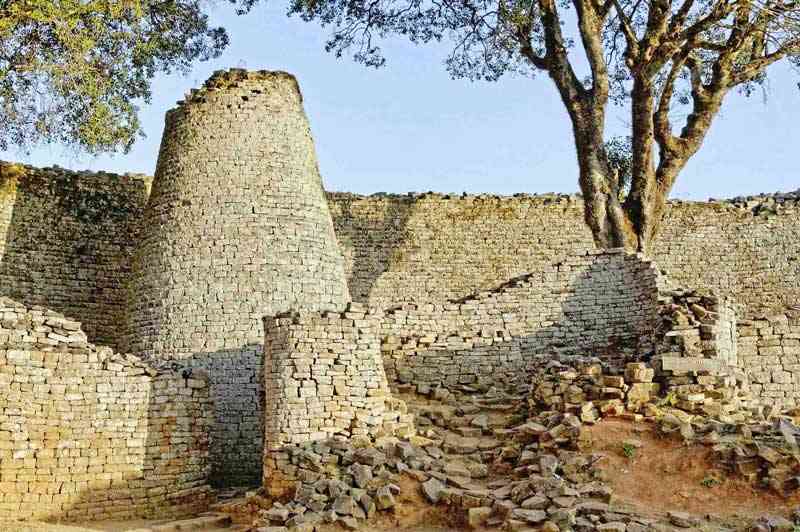
The Great Zimbabwe National Monument, located in southeastern Zimbabwe, stands as one of Africa’s most impressive archaeological sites, offering a window into the rich history and architectural prowess of ancient civilizations. Spanning approximately 722 hectares, the monument comprises several distinct areas, each revealing different aspects of its historical significance.
Description of the Ancient Stone City:
The Great Zimbabwe National Monument stands as a testament to the architectural and cultural achievements of ancient African civilizations. Located in southeastern Zimbabwe, this expansive archaeological site comprises three main areas: the Hill Complex, the Valley Complex, and the Great Enclosure.
The most iconic feature, the Great Enclosure, is a massive stone structure with walls standing up to 11 meters high, built entirely without mortar. This structure, along with numerous others scattered across the site, reflects the engineering prowess and organizational skills of the Kingdom of Zimbabwe, which flourished between the 11th and 15th centuries.
Significance as a UNESCO World Heritage Site:
Designated as a UNESCO World Heritage site in 1986, the Great Zimbabwe National Monument holds global significance for its cultural, historical, and archaeological value. It represents the largest and most significant ancient stone complex south of the Sahara, highlighting the sophistication of African civilizations during the medieval period.
The site’s inscription recognizes its role in showcasing the political, social, and economic complexities of the Kingdom of Zimbabwe, which was a center of trade and cultural exchange in southern Africa. It also underscores the importance of preserving and understanding indigenous African history and architecture.
Exploration of the Great Enclosure and Other Structures:
Visitors to the Great Zimbabwe National Monument can explore the Great Enclosure, characterized by its conical tower and intricate stonework. This structure is believed to have served as a royal residence or ceremonial center, emphasizing the hierarchical structure and cultural practices of the kingdom.
Additionally, the site features numerous other ruins, including the Hill Complex with its terraces and platforms, and the Valley Complex, which includes residential and industrial areas. Each area offers insights into the daily life, religious practices, and architectural achievements of the inhabitants of Great Zimbabwe.
Exploring these structures allows visitors to appreciate the scale and complexity of the ancient city, offering a window into Zimbabwe’s rich historical and cultural heritage.
Matobo Hills

Located near Bulawayo in Zimbabwe, the Matobo Hills stand as a revered landscape of cultural, historical, and spiritual significance. This UNESCO World Heritage site, designated in 2003, encompasses a rugged expanse of granite hills and balancing rock formations, interspersed with lush valleys and diverse flora and fauna.
Overview of the Matobo Hills as a UNESCO World Heritage Site:
The Matobo Hills, located near Bulawayo in Zimbabwe, hold immense cultural, historical, and spiritual significance. Designated as a UNESCO World Heritage site in 2003, this granite rock landscape is renowned for its unique geological formations, rich biodiversity, and cultural heritage spanning thousands of years.
The Matobo Hills have been inhabited for over 100,000 years, evidenced by the ancient rock art found in numerous caves and shelters throughout the area. These paintings depict scenes of hunting, gathering, and ritual practices, providing invaluable insights into the daily life and spiritual beliefs of the San people, who are believed to have been the earliest inhabitants of the region.
Cecil Rhodes’ Grave and Historical Significance:
One of the most notable landmarks in the Matobo Hills is the grave of Cecil Rhodes, the British imperialist and mining magnate. Rhodes, who played a significant role in the colonization of southern Africa, chose the Matobo Hills as his final resting place due to its natural beauty and spiritual significance.
Rhodes’ grave, situated atop a granite kopje (hill), has become a controversial symbol of colonialism and its lasting impact on Zimbabwe’s history. Despite this, the Matobo Hills remain a site of pilgrimage for many, reflecting the complex layers of history and identity in modern Zimbabwe.
Rock Art and Its Portrayal of Early Human Settlement:
The Matobo Hills are home to some of the finest examples of ancient rock art in southern Africa. These paintings, created by the San people over thousands of years, depict a variety of subjects, including animals, human figures, and abstract symbols.
The rock art provides valuable insights into the early human settlement of the region, showcasing the cultural practices, spiritual beliefs, and artistic expression of the San people. The paintings are not only a testament to the creativity and resilience of Zimbabwe’s indigenous populations but also serve as a reminder of the deep historical roots that connect modern Zimbabweans to their ancestors.
Exploring the Matobo Hills and its rock art sites offers visitors a unique opportunity to engage with Zimbabwe’s ancient past and appreciate the cultural diversity that has shaped the country’s identity. It underscores the importance of preserving and celebrating Zimbabwe’s rich cultural heritage for future generations
Victoria Falls
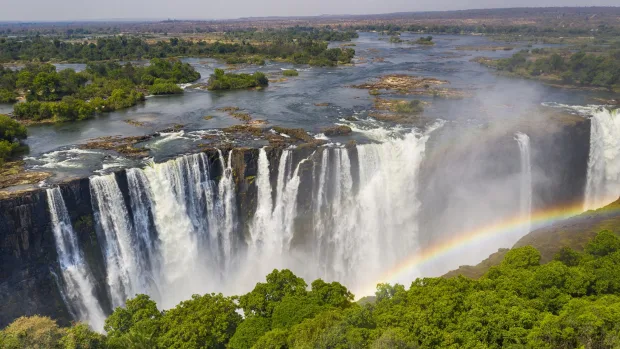
Victoria Falls, known locally as “Mosi-oa-Tunya” (“The Smoke that Thunders”), is one of the most awe-inspiring natural wonders in the world. Located on the Zambezi River at the border between Zimbabwe and Zambia, this UNESCO World Heritage site captivates visitors with its sheer size, majestic beauty, and cultural significance.
History of Victoria Falls and Its Cultural Significance:
Victoria Falls, known locally as Mosi-oa-Tunya (“The Smoke that Thunders”), has a storied history deeply intertwined with the cultures of the indigenous peoples of southern Africa. For centuries, the falls have been revered by local tribes such as the Tonga and Lozi, who consider the site sacred and imbue it with spiritual significance. The thunderous roar of the water plunging over the cliffs, combined with the perpetual mist that rises high into the sky, has inspired awe and respect among these communities, who have incorporated the falls into their myths, rituals, and traditions.
Exploration by David Livingstone and Subsequent Impact:
Victoria Falls gained international fame when it was first sighted by the Scottish missionary and explorer, David Livingstone, on November 16, 1855. Livingstone named the falls after Queen Victoria of Britain, thereby introducing them to the Western world. His vivid descriptions and subsequent writings about the falls sparked a wave of interest and curiosity among Europeans, leading to further exploration and development in the region.
Livingstone’s exploration of Victoria Falls opened up central Africa to European trade and colonization. The discovery of the falls prompted the construction of transportation routes, such as railways and roads, which facilitated trade and commerce between the interior of Africa and the coast. This development had far-reaching consequences for the indigenous peoples and ecosystems of the region, profoundly altering their way of life and environment.
Local Myths and Legends Associated with the Falls:
Victoria Falls is steeped in local myths and legends that reflect the spiritual beliefs and cultural heritage of the surrounding communities. According to Tonga legend, the falls are inhabited by the spirit of Nyaminyami, the River God. Nyaminyami is believed to reside in the Zambezi River and is depicted as a serpent-like creature with the head of a fish and the body of a snake. The legend holds that Nyaminyami was separated from his wife during the construction of the Kariba Dam downstream, causing floods and devastation in protest.
Another local legend tells of a beautiful maiden named Mbukula, who sacrificed herself to the river to appease Nyaminyami and stop the devastating floods. Her bravery and sacrifice are celebrated as symbols of courage and selflessness among the Tonga people.
These myths and legends not only add to the mystique and allure of Victoria Falls but also highlight the deep spiritual connection that local communities have with this natural wonder. They serve as cultural touchstones, preserving traditions and beliefs that have been passed down through generations, reinforcing the falls’ status as a place of profound cultural and spiritual significance in Zimbabwe and Zambia
Harare
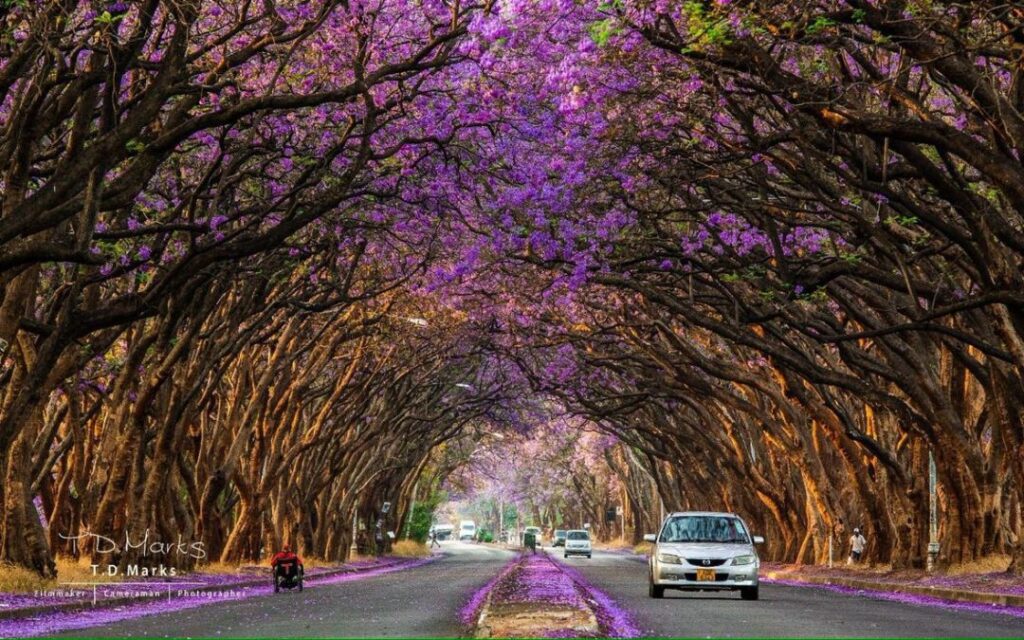
Harare, the capital city of Zimbabwe, stands as a vibrant hub of culture, history, and urban development in southern Africa. Originally known as Salisbury during the colonial era, Harare has evolved into a dynamic metropolis that blends modernity with a rich historical legacy.
Colonial Architecture in the City Center:
Harare’s city center is a testament to its colonial past, showcasing an array of architectural styles that reflect Zimbabwe’s history under British rule. Prominent examples include:
- City Hall: A striking neo-baroque-style building constructed in the early 20th century, featuring grand columns and ornate detailing.
- Anglican Cathedral of St. Mary and All Saints: Built in the late 19th century, this cathedral exhibits Gothic Revival architecture with its pointed arches and intricate stained glass windows.
- Government Buildings: Several colonial-era government offices and administrative buildings, characterized by their imposing facades and classical designs.
These architectural landmarks not only serve as visual reminders of Zimbabwe’s colonial heritage but also contribute to the city’s unique character and charm.
Museums such as the National Gallery and National Archives:
Harare is home to several important museums that preserve and showcase Zimbabwe’s cultural and historical heritage:
- National Gallery of Zimbabwe: Located in Harare’s Civic Centre, the National Gallery houses an extensive collection of Zimbabwean and African art, including contemporary paintings, sculptures, and traditional artifacts. It serves as a cultural hub for local artists and hosts exhibitions that explore diverse themes and artistic expressions.
- National Archives of Zimbabwe: Situated in the heart of Harare, the National Archives preserves documents, photographs, and records that document Zimbabwe’s history, from pre-colonial times to the present day. Researchers and historians access these archives to study various aspects of Zimbabwe’s political, social, and economic evolution.
Historical Significance of Harare in Zimbabwe’s Modern History:
Harare holds significant historical importance as Zimbabwe’s capital and largest city:
- Political Center: Since gaining independence from British colonial rule in 1980, Harare has served as the political epicenter of Zimbabwe. It is where key decisions regarding governance, policy-making, and national development are made by the government and parliament.
- Cultural and Economic Hub: Harare plays a vital role in Zimbabwe’s cultural and economic landscape, hosting major events, festivals, and international conferences. Its vibrant arts scene, bustling markets, and diverse culinary offerings reflect Zimbabwe’s cultural diversity and entrepreneurial spirit.
- Educational and Intellectual Center: The presence of universities, research institutes, and libraries in Harare contributes to its role as an educational and intellectual hub. Scholars and students from across Zimbabwe and beyond come to Harare to pursue academic studies and engage in intellectual discourse.
In conclusion, Harare’s colonial architecture, museums, and historical significance underscore its role as a dynamic city that bridges Zimbabwe’s past with its present and future aspirations. As a center of culture, politics, and commerce, Harare continues to shape Zimbabwe’s identity and contribute to its ongoing journey of national development
Khami Ruins
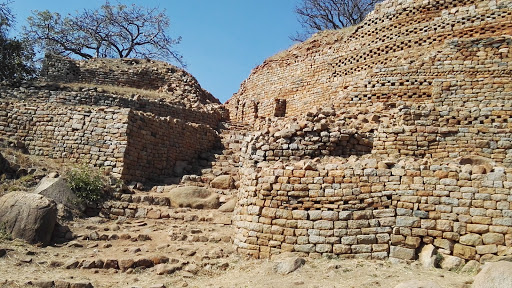
The Khami Ruins, located near Bulawayo in southwestern Zimbabwe, represent the remnants of an ancient city that was once the capital of the Kingdom of Butua. This archaeological site, dating back to the 14th century, is renowned for its impressive stone architecture and historical significance in Zimbabwean history.
Overview of the Medieval Khami Kingdom
The medieval Khami Kingdom, centered around the Khami Ruins near Bulawayo, Zimbabwe, flourished as a prominent political and economic power in southern Africa from the 15th to the 17th centuries. This kingdom, also known as the Kingdom of Butua, played a crucial role in regional trade and cultural exchange, leaving behind a legacy of impressive architecture and historical significance.
Architecture and Layout of the Ruins
The Khami Ruins are renowned for their distinctive stone architecture, which reflects the advanced engineering skills and organizational structure of the Khami Kingdom. The ruins cover an expansive area of approximately 180 hectares and are organized into several distinct sections:
- Great Enclosure: This monumental structure served as the ceremonial and administrative heart of the kingdom. It features intricately designed walls, terraces, and platforms, constructed using granite stones without mortar. The Great Enclosure’s layout and design highlight the kingdom’s hierarchical structure and the importance of centralized governance.
- Western Enclosure: This area likely housed residential quarters for the kingdom’s elite and administrative officials. It includes remnants of stone walls and platforms that indicate the presence of living spaces and storage facilities.
- Eastern Enclosure: Thought to have served religious and spiritual purposes, the Eastern Enclosure includes spaces associated with ancestral worship and ritual practices. These areas feature stone platforms and enclosures that may have been used for ceremonies and gatherings.
The architectural layout of the Khami Ruins reflects the kingdom’s strategic planning and urban development, showcasing its ability to create fortified settlements and ceremonial centers that facilitated both political administration and cultural activities.
Cultural and Historical Insights into the Kingdom’s Existence
The Khami Kingdom was a pivotal player in the regional trade networks of southern Africa, particularly known for its control over trade routes connecting the interior with coastal ports. The kingdom’s wealth and influence were bolstered by trade in commodities such as gold, ivory, and copper, which were exchanged with traders from across the region.
Culturally, the Khami Kingdom was distinguished by its artistic achievements, including pottery, ironwork, and the construction of stone structures like those found at the Khami Ruins. These artifacts provide insights into the kingdom’s social organization, religious beliefs, and everyday life.
Historically, the Khami Kingdom represents a period of cultural interaction and political consolidation in southern Africa during the medieval era. It was succeeded by other kingdoms and states in the region, each contributing to the rich tapestry of Zimbabwe’s pre-colonial history.
Visiting the Khami Ruins offers visitors a unique opportunity to explore Zimbabwe’s medieval past and appreciate the architectural and cultural achievements of the Khami Kingdom. It serves as a reminder of the kingdom’s enduring legacy and its role in shaping the history and heritage of southern Africa.
Bulawayo
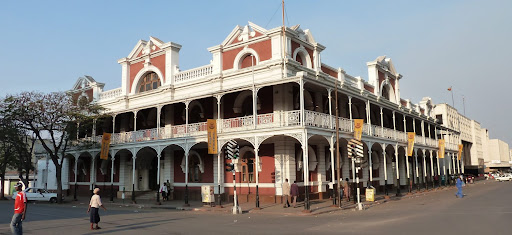
Bulawayo, Zimbabwe’s second-largest city and cultural heart of the Ndebele people, stands as a vibrant urban center rich in history, art, and cultural heritage. Founded in 1872 by King Lobengula of the Ndebele Kingdom, Bulawayo has evolved into a dynamic city that blends tradition with modernity.
Historical Significance of Bulawayo as Zimbabwe’s Second-Largest City
Bulawayo, Zimbabwe’s second-largest city, holds significant historical importance as a cultural and economic center in southern Africa. Founded in 1872 by King Lobengula of the Ndebele Kingdom, Bulawayo became the capital of the kingdom and a hub of Ndebele culture and governance.
During the late 19th century, Bulawayo served as a focal point of resistance against British colonization. The city witnessed pivotal events during the Anglo-Ndebele War, including the occupation by British forces and subsequent changes in governance. This period of conflict and transition shaped Bulawayo’s identity as a city deeply rooted in both indigenous Ndebele heritage and colonial history.
Natural History Museum and Railway Museum
Bulawayo is home to several museums that offer insights into Zimbabwe’s natural history and colonial-era development:
- Natural History Museum: Located in Bulawayo, the Natural History Museum showcases the diverse flora and fauna of Zimbabwe, including exhibits on paleontology, geology, and biodiversity. Visitors can explore displays of dinosaur fossils, indigenous wildlife specimens, and cultural artifacts that highlight Zimbabwe’s natural heritage.
- Railway Museum: The Railway Museum in Bulawayo preserves the history of Zimbabwe’s railway system, which played a crucial role in the country’s economic development and transportation infrastructure. The museum features vintage locomotives, railway carriages, and artifacts that trace the evolution of rail travel in southern Africa.
Exploration of Colonial-Era Buildings and Their Stories
Bulawayo’s architectural landscape reflects its colonial past and cultural diversity. The city boasts numerous colonial-era buildings that tell stories of Zimbabwe’s history and development:
- Bulawayo Railway Station: Built in the early 20th century, the Bulawayo Railway Station is a prominent example of colonial architecture, characterized by its Victorian design and imposing structure. It served as a crucial transportation hub during the colonial era and continues to be a focal point of the city’s railway network.
- City Hall: The Bulawayo City Hall, completed in 1914, is another iconic colonial-era building known for its grandeur and architectural elegance. It houses administrative offices and event spaces, reflecting Bulawayo’s civic pride and historical legacy.
Exploring these colonial-era buildings allows visitors to appreciate Bulawayo’s architectural heritage and the stories embedded within its urban fabric. Each structure serves as a reminder of Zimbabwe’s complex history, from colonial expansion and resistance to cultural resilience and modern-day development.
In conclusion, Bulawayo’s historical significance, coupled with its cultural institutions and colonial-era architecture, makes it a compelling destination for travelers seeking to delve into Zimbabwe’s past and present. The city’s museums and architectural landmarks offer opportunities to explore diverse aspects of Zimbabwean history and heritage, enriching the visitor experience with insights into southern Africa’s dynamic cultural landscape.
Chimanimani Mountains
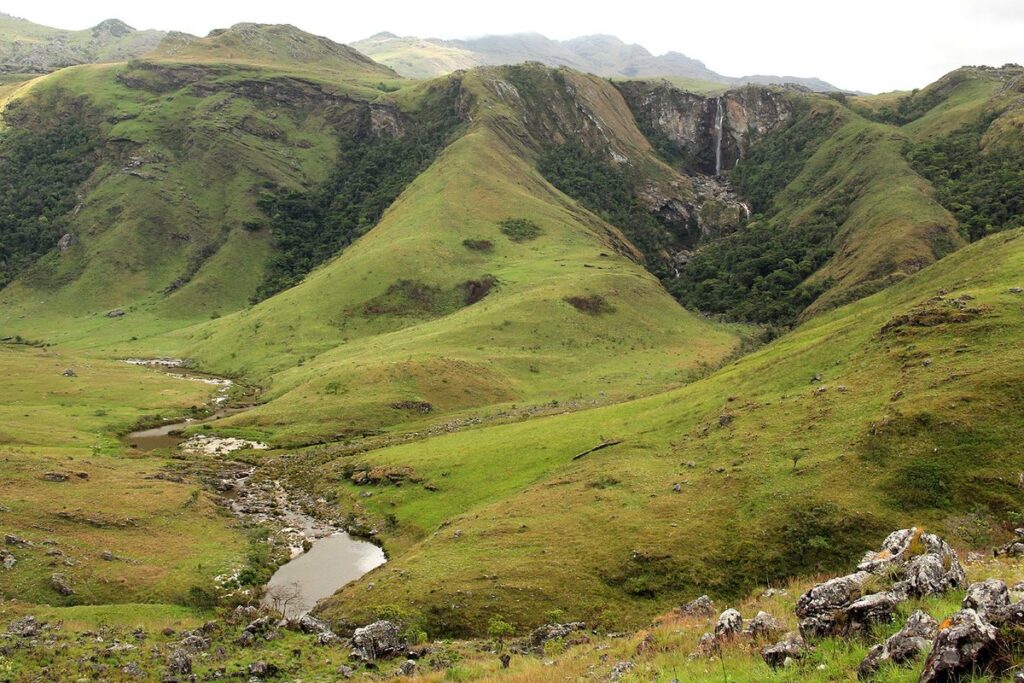
The Chimanimani Mountains, located in the eastern border region of Zimbabwe and Mozambique, stand as a rugged and majestic natural wonder in southern Africa. This mountain range, known for its scenic beauty, rich biodiversity, and challenging hiking trails, attracts nature enthusiasts, adventurers, and conservationists alike.
Ancient San Rock Art and Its Preservation
The Chimanimani region in Zimbabwe is renowned for its ancient San rock art, a testament to the rich cultural heritage of the indigenous San people who once inhabited the area. This rock art, dating back thousands of years, consists of paintings and engravings on cave walls and rock shelters throughout the mountains. These artworks depict scenes of daily life, spiritual beliefs, and hunting practices of the San people, offering invaluable insights into their culture and history.
Preserving this ancient rock art is crucial for understanding Zimbabwe’s cultural evolution and honoring the legacy of the San people. Conservation efforts focus on protecting the fragile rock surfaces from environmental degradation, vandalism, and human impact. Initiatives include monitoring visitor access, implementing conservation guidelines, and raising awareness about the significance of rock art among local communities and tourists.
Cultural Significance of the Rock Art
The rock art in the Chimanimani region holds profound cultural significance for descendants of the San people and Zimbabweans at large. It serves as a cultural repository, preserving stories, traditions, and spiritual beliefs passed down through generations. The artworks reflect the San people’s deep connection to the natural world, depicting animals, plants, and celestial symbols that hold spiritual meaning and symbolic importance.
Studying the rock art provides insights into the San people’s social structures, artistic expressions, and their adaptation to the diverse landscapes of southern Africa. It underscores the importance of indigenous knowledge and cultural practices in shaping Zimbabwe’s cultural mosaic and enriching global understanding of human history.
Biodiversity and Historical Context of the Chimanimani Region
The Chimanimani region is renowned for its exceptional biodiversity and historical context, making it a unique ecological and cultural landscape in southern Africa. The mountains support a diverse array of plant and animal species, including endemic and rare species adapted to the region’s varied habitats. From montane forests and grasslands to alpine meadows and rocky outcrops, the Chimanimani Mountains provide habitats for species such as the rare cycad Encephalartos chimanimaniensis and the endangered blue swallow.
Historically, the Chimanimani region has been inhabited for thousands of years, with evidence of human presence dating back to the Stone Age. The San people, among the earliest inhabitants, left a legacy of rock art that reflects their deep-rooted connection to the landscape and its resources. The region’s historical context encompasses trade routes, cultural exchanges, and interactions between indigenous communities and external influences, shaping its identity as a crossroads of human history and biodiversity conservation.
In conclusion, the Chimanimani region’s ancient rock art, cultural significance, and rich biodiversity underscore its importance as a heritage site of global significance. Preserving this natural and cultural heritage is essential for future generations to appreciate and learn from Zimbabwe’s diverse cultural tapestry and ecological wealth
Hwange National Park
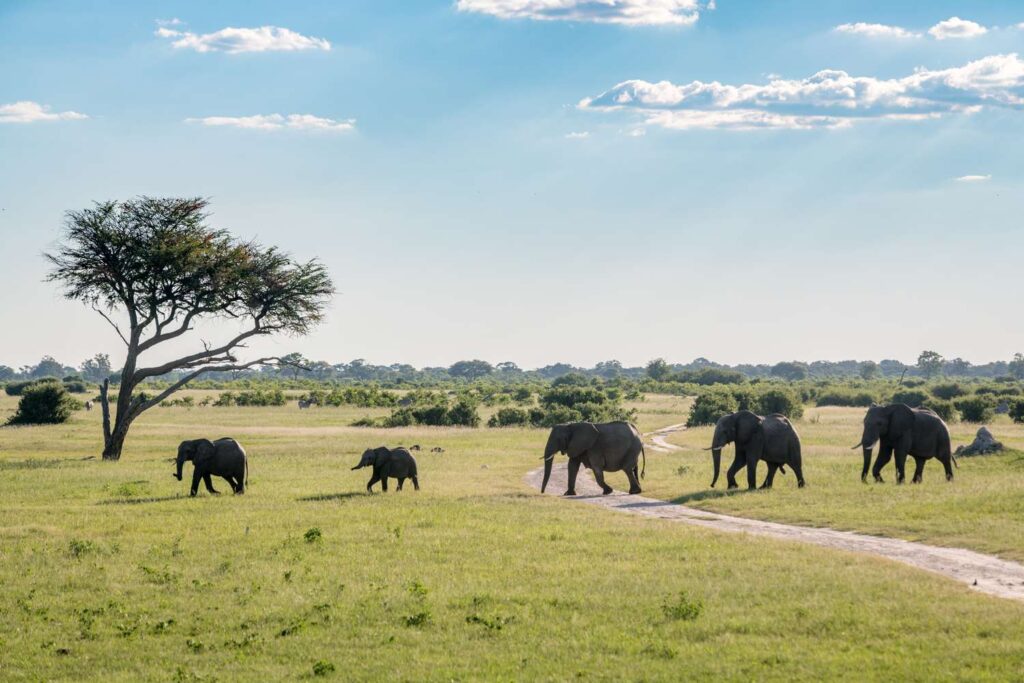
Hwange National Park, located in western Zimbabwe, stands as the country’s largest national park and one of Africa’s premier wildlife destinations. Spanning over 14,600 square kilometers, Hwange is renowned for its diverse landscapes, abundant wildlife, and conservation efforts.
Royal Hunting Ground History
Hwange National Park in Zimbabwe has a rich history as a royal hunting ground dating back centuries. Originally utilized by local Ndebele chiefs for hunting and gathering, the area later became a favored hunting ground for the Ndebele kings, including King Lobengula in the 19th century. The park’s name, derived from Chief Hwange who governed the region, reflects its historical significance as a place of royal privilege and cultural heritage.
Conservation Efforts and Wildlife Preservation
Hwange National Park is celebrated for its robust conservation efforts aimed at preserving its diverse wildlife and pristine ecosystems. Managed by the Zimbabwe Parks and Wildlife Management Authority, the park implements rigorous anti-poaching measures and sustainable tourism practices to protect its iconic species such as elephants, lions, and African wild dogs.
Conservation initiatives include community outreach programs to foster local support for wildlife conservation and habitat restoration projects to maintain the park’s ecological balance. The park’s extensive network of waterholes and artificial pans ensures year-round water availability, critical for sustaining wildlife populations during dry seasons.
Historical and Ecological Significance of Hwange
Hwange National Park holds significant historical and ecological importance within Zimbabwe and the broader southern African region. Historically, the park’s landscape has witnessed human habitation and cultural interactions dating back millennia, evidenced by ancient rock art and archaeological sites scattered throughout its vast expanse.
Ecologically, Hwange is renowned for its diverse habitats, including Kalahari sands, teak forests, and grasslands, which support a remarkable variety of plant and animal species. The park’s large elephant population is one of the largest in the world, showcasing the park’s critical role in elephant conservation efforts.
Furthermore, Hwange serves as a vital ecological corridor and biodiversity hotspot, facilitating the movement of wildlife across national borders and contributing to regional conservation initiatives. Its designation as a UNESCO Natural World Heritage site underscores its global significance as a protected area that conserves both natural and cultural heritage.
In conclusion, Hwange National Park’s royal hunting ground history, conservation efforts, and ecological significance highlight its role as a flagship protected area in Zimbabwe. By preserving its natural landscapes and wildlife populations, Hwange ensures future generations can continue to appreciate and benefit from its unparalleled beauty and ecological diversity
Mutare

Mutare, situated in eastern Zimbabwe, serves as a gateway to the scenic Eastern Highlands and stands as an important commercial and cultural center in the region. Known for its lush landscapes, mild climate, and historical significance, Mutare offers visitors a blend of natural beauty and urban charm.
Historic Architecture and Cultural Sites:
Mutare, nestled in Zimbabwe’s scenic Eastern Highlands, boasts a rich tapestry of historic architecture and cultural sites. The city’s colonial past is reflected in its architecture, with buildings showcasing Victorian and Edwardian influences. Notable landmarks include the Mutare Museum, housed in a historic building that preserves artifacts and exhibits on local history, archaeology, and cultural heritage.
Cecil Kop Nature Reserve and Vumba Botanical Gardens:
Mutare is renowned for its natural beauty, with attractions such as the Cecil Kop Nature Reserve and Vumba Botanical Gardens offering immersive experiences in Zimbabwe’s biodiversity. Cecil Kop Nature Reserve, located near the city, features rocky outcrops and indigenous flora, providing opportunities for hiking, birdwatching, and panoramic views of Mutare and its surroundings.
The Vumba Botanical Gardens, nestled in the Vumba Mountains, showcase a diverse collection of plant species, including rare orchids, cycads, and exotic trees. Visitors can explore tranquil walking trails, enjoy picnics amidst scenic landscapes, and marvel at the garden’s botanical diversity against the backdrop of mist-covered hills.
Exploration of Mutare’s Role in Zimbabwe’s Eastern Region:
Mutare serves as a pivotal hub in Zimbabwe’s eastern region, offering strategic access to the Eastern Highlands and neighboring countries such as Mozambique. Historically, Mutare played a significant role in trade and commerce, benefiting from its proximity to major transportation routes and natural resources.
Economically, Mutare is a center for agriculture, mining, and manufacturing, contributing to regional development and employment opportunities. The city’s diverse economy supports local industries and businesses, enhancing its role as a commercial and administrative center in eastern Zimbabwe.
Culturally, Mutare celebrates its multicultural heritage through festivals, markets, and community events that showcase traditional music, dance, and cuisine. The city’s cultural vibrancy is evident in its arts scene, with local artisans creating pottery, weaving, and sculptures that reflect Zimbabwean craftsmanship and creativity
Gonarezhou National Park
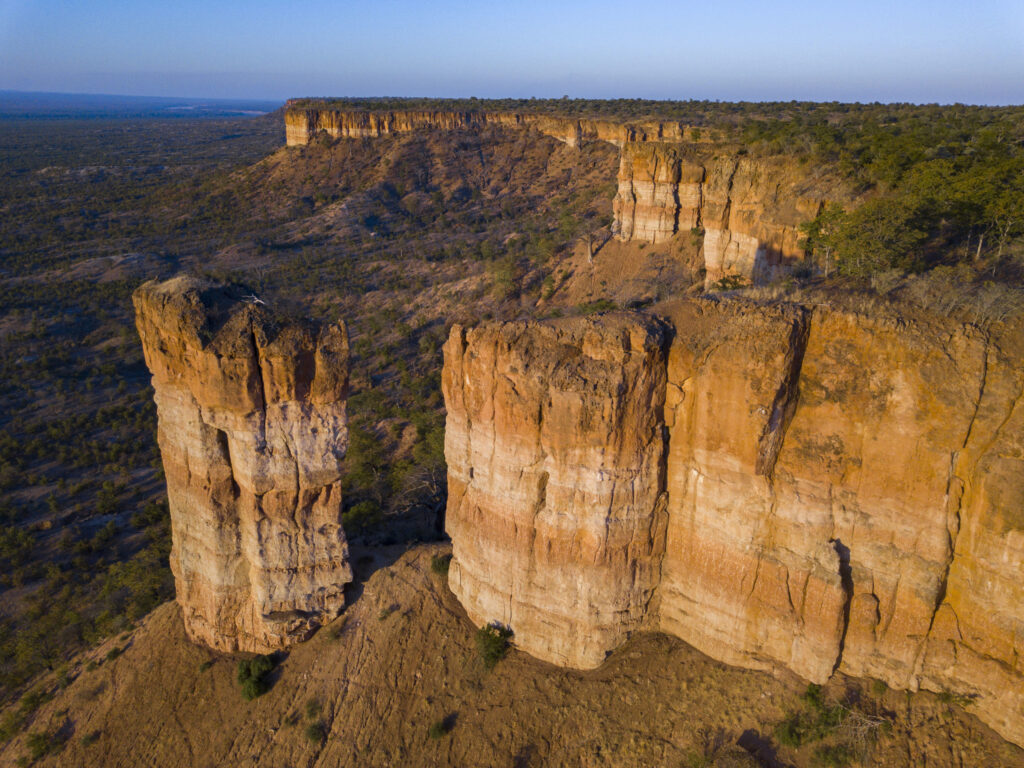
Gonarezhou National Park, located in southeastern Zimbabwe near the border with Mozambique, stands as one of the country’s most pristine and expansive wildlife sanctuaries. Covering over 5,000 square kilometers, Gonarezhou forms part of the Great Limpopo Transfrontier Park, a conservation area that spans across Zimbabwe, South Africa, and Mozambique.
Ancient Rock Art and Archaeological Discoveries:
Gonarezhou National Park, located in southeastern Zimbabwe, is renowned for its rich cultural heritage, including ancient rock art and archaeological sites dating back thousands of years. The park’s rock art, found in caves and shelters throughout the area, provides insights into the lives, beliefs, and artistic expressions of early inhabitants, including the San people and later indigenous communities.
These ancient artworks depict scenes of hunting, rituals, and daily life, offering a window into Zimbabwe’s prehistoric past and the cultural evolution of its diverse populations. Preservation efforts focus on safeguarding these fragile rock surfaces from environmental degradation and human impact, ensuring that future generations can study and appreciate this invaluable cultural legacy.
Wildlife Conservation and Historical Background:
Gonarezhou, meaning “Place of Elephants” in the Shona language, is renowned for its exceptional biodiversity and wildlife conservation efforts. The park supports a wide range of habitats, including mopane woodlands, riverine forests, and open grasslands, which provide critical ecosystems for numerous species.
Wildlife in Gonarezhou includes iconic African species such as elephants, lions, leopards, and buffalo, as well as rare and endangered species like African wild dogs and nyala antelope. Conservation initiatives in the park focus on habitat preservation, anti-poaching measures, and community engagement to promote sustainable conservation practices and ensure the long-term survival of these species.
Importance of Gonarezhou in Preserving Zimbabwe’s Natural and Cultural Heritage:
Gonarezhou National Park plays a pivotal role in preserving Zimbabwe’s natural and cultural heritage on multiple fronts. Ecologically, the park protects vital ecosystems and serves as a refuge for diverse wildlife populations, contributing to regional biodiversity conservation efforts and ecological balance.
Culturally, Gonarezhou is a repository of ancient rock art and archaeological sites that highlight Zimbabwe’s rich cultural diversity and historical significance. These cultural resources provide opportunities for research, education, and cultural tourism, fostering appreciation for Zimbabwe’s indigenous cultures and their enduring connections to the natural environment.
Overall, Gonarezhou National Park exemplifies Zimbabwe’s commitment to sustainable conservation practices and the preservation of its natural and cultural heritage. By conserving its pristine landscapes, wildlife populations, and archaeological treasures, Gonarezhou ensures that future generations can continue to benefit from and celebrate Zimbabwe’s unique biodiversity and cultural legacy.
Conclusion
In conclusion, Historical Tours in Zimbabwe Gonarezhou National Park stands as a beacon of Zimbabwe’s commitment to preserving its natural wonders and cultural heritage. From ancient rock art that chronicles millennia of human history to vibrant ecosystems teeming with diverse wildlife, Gonarezhou embodies the essence of conservation and sustainable tourism. As a sanctuary for endangered species and a haven for ecological balance, the park not only safeguards Zimbabwe’s biodiversity but also offers invaluable opportunities for education, research, and eco-friendly recreation. By protecting its pristine landscapes and cultural treasures, Gonarezhou ensures that future generations can continue to marvel at and cherish the natural and cultural riches that define this extraordinary national park. Zimbabwe offers a wealth of historical tours that provide a window into its rich and diverse heritage. From the ancient ruins of Great Zimbabwe to the colonial architecture of Harare and Bulawayo, each site tells a story of Zimbabwe’s past civilizations, cultural exchanges, and struggles for independence. The rock art of Matobo Hills and Chimanimani Mountains offers glimpses into ancient traditions and spiritual beliefs, while Victoria Falls and Hwange National Park showcase the country’s natural wonders and wildlife. Preserving and promoting Zimbabwe’s heritage through tourism is crucial for several reasons. It helps conserve historical sites and artifacts, ensuring they are protected for future generations. Tourism also stimulates the economy by creating jobs and generating revenue that can support conservation efforts and local communities. Furthermore, it fosters cultural exchange and understanding, as visitors from around the world engage with Zimbabwe’s diverse cultures, traditions, and histories. Exploring Zimbabwe’s historical sites offers a deeper understanding of the country’s past and present. It allows travelers to appreciate the resilience of Zimbabwean communities, the complexities of its history, and the beauty of its landscapes. By visiting these sites, travelers contribute to their preservation and support sustainable tourism practices that benefit both local communities and the environment. In essence, Zimbabwe’s historical tours not only offer memorable experiences but also serve as gateways to discovering the country’s rich tapestry of cultures and natural heritage. They encourage a deeper appreciation for Zimbabwe’s past and present, highlighting the importance of preserving and promoting its heritage for future generations to enjoy and learn from.
